For three decades we’ve covered many amazing basketball characters, but some stand above the rest—not only because of their on-court skills (though those are always relevant), but because of how they influenced and continue to influence basketball culture, and thus influenced SLAM. Meanwhile, SLAM has also changed those players’ lives in various ways, as we’ve documented their careers with classic covers, legendary photos, amazing stories, compelling videos and more.
We compiled a group of individuals (programming note: 30 entries, not 30 people total) who mean something special to SLAM and to our audience. Read the full list here and order your copy of SLAM 248, where this list was originally published, here.
This was early 2002, a cold winter day in snow-covered Trenton, NJ, in an arena then named for a bank and since renamed for an insurance company, as these things are. Among the more than 8,000 people packed into the building were hundreds of media members; among them was a now-famous NBA reporter, best known for his hashtag social media bombs, then working as a columnist at a midsized newspaper where, a few years earlier, we (briefly) had been colleagues. Like the rest of the media pack, we were there to watch a high school basketball game, but really, we were there to watch one particular high school basketball player.
Chatting pregame near our baseline seats, two or three rows back from the court, he said something about that player that at the time I disagreed with, and that I’ve also never forgotten: “This kid’s like the perfect SLAM magazine guy.”
I disagreed because, well, we already had a few perfect guys. We had Michael Jordan, not far away from his final retirement but still the foundation without which this magazine could not exist. We had Kobe Bryant, a soon-to-be three-time defending NBA champion and Jordan’s polarizing heir apparent. And we had Allen Iverson, the purest representation of an ongoing cultural moment that this magazine has documented like no one else. But…this kid? Generationally special, no doubt. It just seemed a bit early to think of him on quite that level.

Six months later, around the time we gave LeBron James his third full-length feature—not including the year of high school diaries he’d penned for us—and his second cover, all (still) before he’d stepped onto an NBA court, I no longer disagreed.
We did not, for the record, see all this coming. Not all of it, anyway. Not the 21 seasons and 21 All-Star nods, not the four championships and four MVPs, sure as hell not the all-time NBA scoring record. But we were very confident he’d be very good, which is why we gave him feature-length coverage before pretty much anyone outside his hometown had heard of him. And the 27 covers and two special issues in the two decades since would seem to confirm that yes, LeBron James—a fixture in these pages for 23 of our 30 years of existence—is probably the single most iconic player of the SLAM era.
He’ll always be remembered most for his NBA superlatives, the unprecedented statistical output and, of course, those rings. That’s the lead on his Wikipedia page and the inscription on his Hall of Fame plaque. But the story—his story, and the nexus of his story with ours—is so much more than that. LeBron’s story was a movie (not to mention a couple of books) before he ever got to Draft night. That’s the story we told before anyone else, the one that left us uniquely suited to tell the rest. Maybe the only thing more incredible than how it started is that somehow, it still shows no signs of coming to an end.
We’ve told this one before, but for the sake of setting the scene, it bears repeating. Spring 2001, near the end of his sophomore year, we took a flight from New York City to Akron, OH, to spend a day with LeBron James. When we arrived at St. Vincent-St. Mary High School, there was a small sign out front bearing the words “WELCOME SLAM MAGAZINE.” Within a year or so, it would be replaced with a sign on the door announcing that media were barred from campus.
But that was later. Back in ’01, the folks at St. V were excited that someone from a national magazine was coming to their tiny high school to write a story about one of their own. They knew LeBron was good, of course—by that point he was a two-time state champ and pretty clearly the best player in Ohio. But SLAM showing up was different. This meant LeBron wasn’t just good. He was about to be famous, too.
LeBron made his mag debut with that feature-length profile that summer, followed immediately by a year-long run as our Basketball Diary writer—the first non-senior to hold that spot. (They might not put that on the HOF plaque, but for both of us, it was history of a sort.) From the beginning, LeBron was telling his story in our pages.
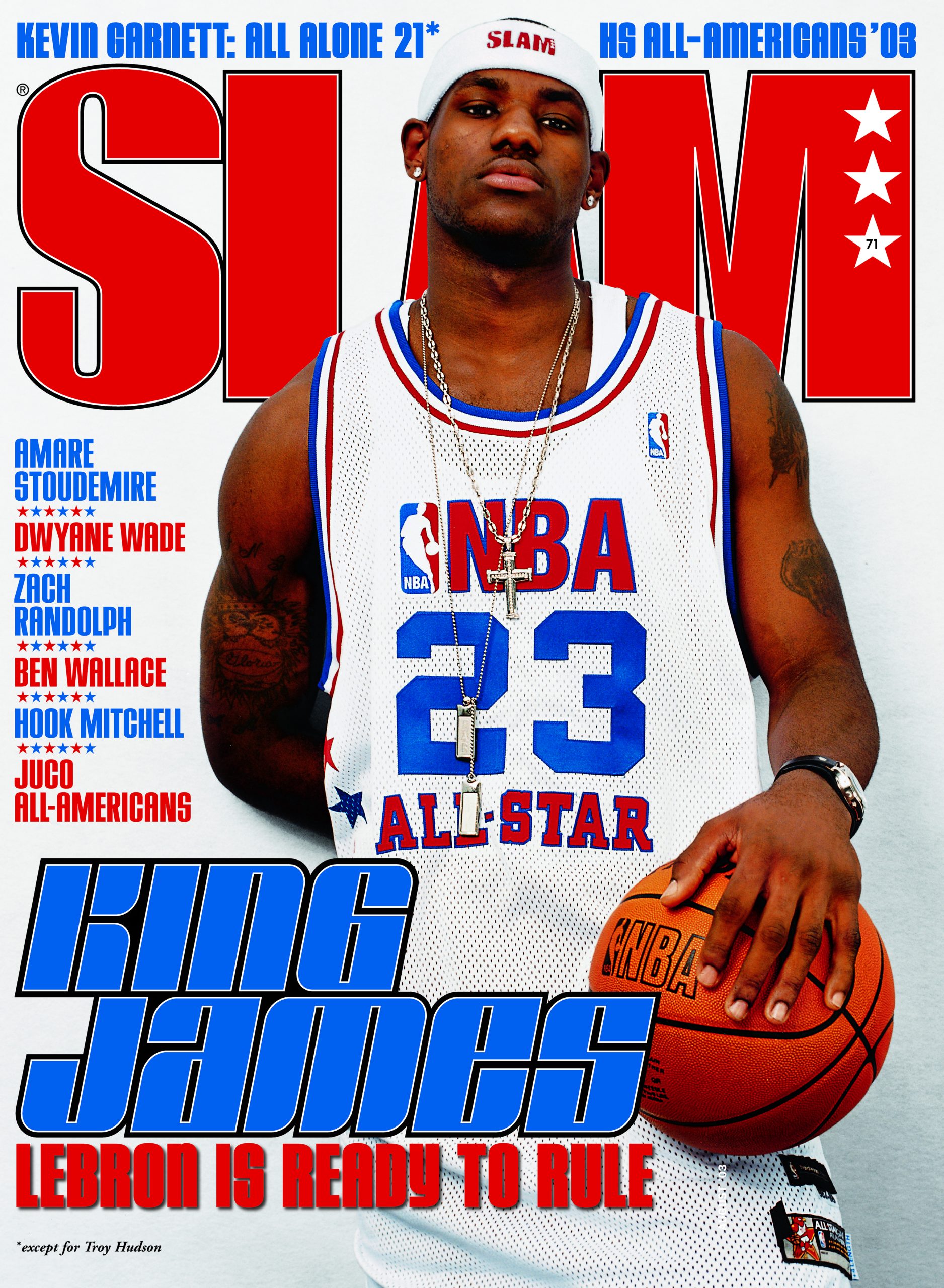
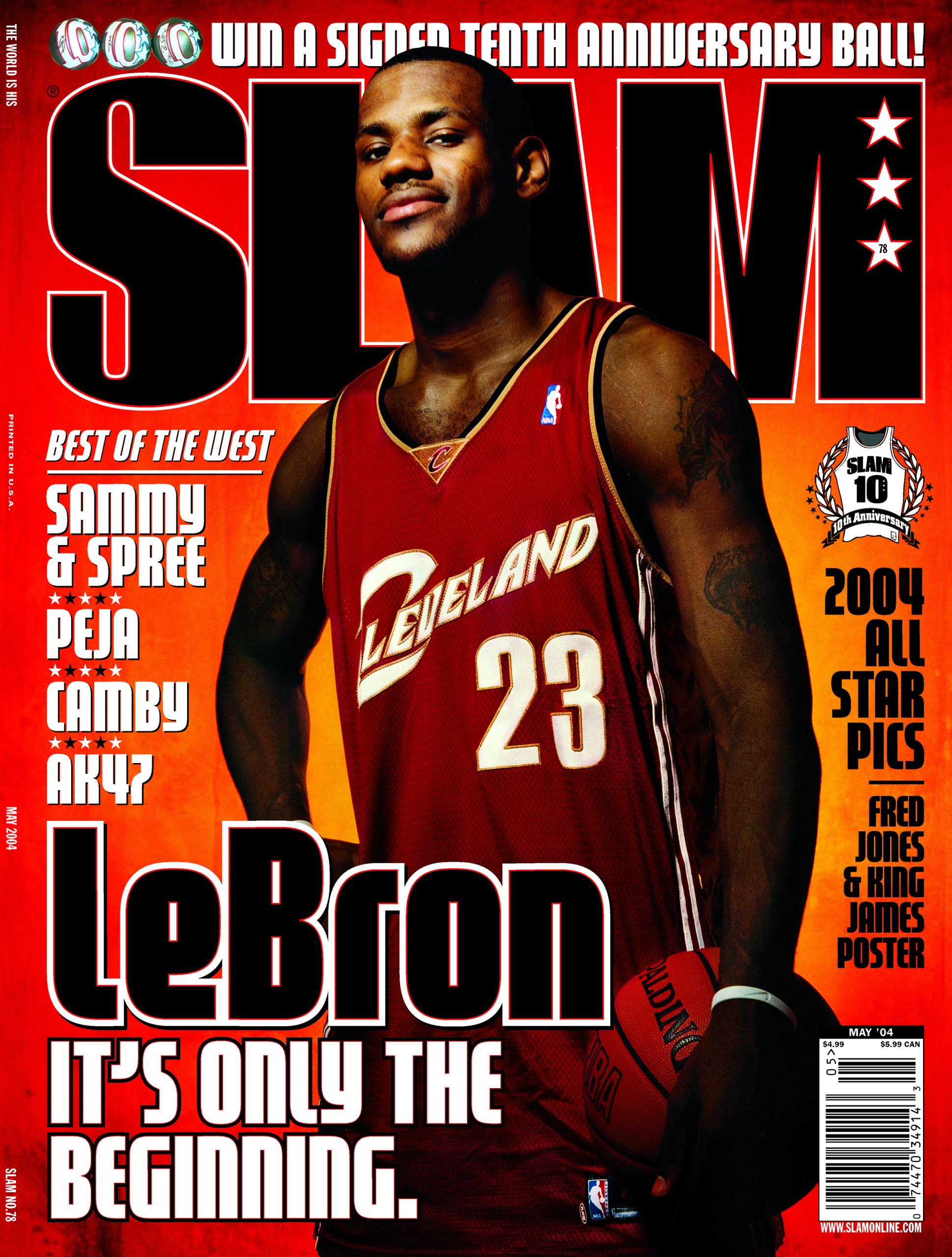

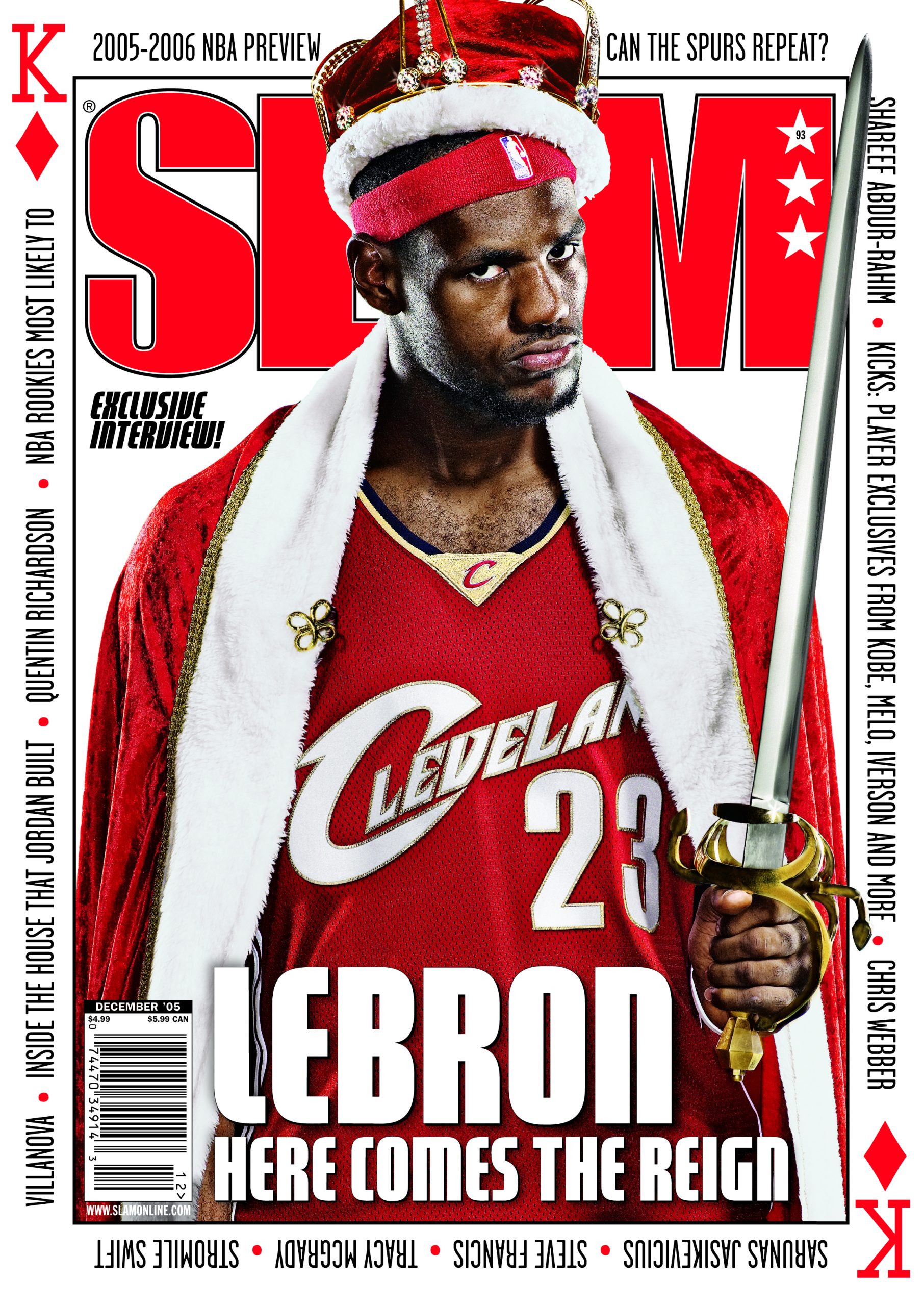
It took a while, but eventually the rest of our sports media peers started catching up. The Sports Illustrated cover came late in his junior year, back when SI was elite and its cover choices could drive the narrative. Steady coverage on SportsCenter, then the place to catch the most important sports news and highlights, followed soon after. By the end of his junior year, Bron’s story was national.
By the middle of his senior year, when St. V was playing a national schedule and LeBron’s highlights were going pre-Twitter viral, it was an unprecedented circus. Ohio’s high school governing body didn’t know how to handle it, investigating the 18-year-old senior—who would be worth more than $100 million by his next birthday—for driving a Hummer gifted to him by his mother, then suspending him for taking a couple of throwback jerseys from a local shop. His first game back from that suspension—initially meant to cost him the remainder of his senior year before a legal challenge shortened it to two games—came on that cold night in Trenton. He scored 52 in a rout, capping the silliest week of the most ridiculous season in his legendary high school career with the loudest possible statement.
Months later—fresh off a second SLAM cover, on which he rocked our logo on a headband (his idea, we didn’t ask)—he was Nike’s $90 million man and the No. 1 pick in the 2003 Draft. Like we said, it was a movie before he ever set foot in the League, an action-packed drama in which the leading man over-came humble beginnings, surmounted every obstacle, and won in the end. And somehow, it was only the start.
It’s gotten difficult at this point to talk about LeBron’s NBA career without focusing on the numbers. The various totals and career averages are almost overwhelming. We’re talking about a dude who put up nearly identical averages—around 30 points, 8 rebounds and 7 assists per—at age 37 as he did at 23. We’re talking about a dude who set the all-time NBA scoring record last year, and who’s on pace to blow by 40K by season’s end. He’s 39 now, and even as he’s shown some signs of time finally catching up, he’s still putting up 25, 7 and 7 a night—numbers just shy of the average output for his entire career.
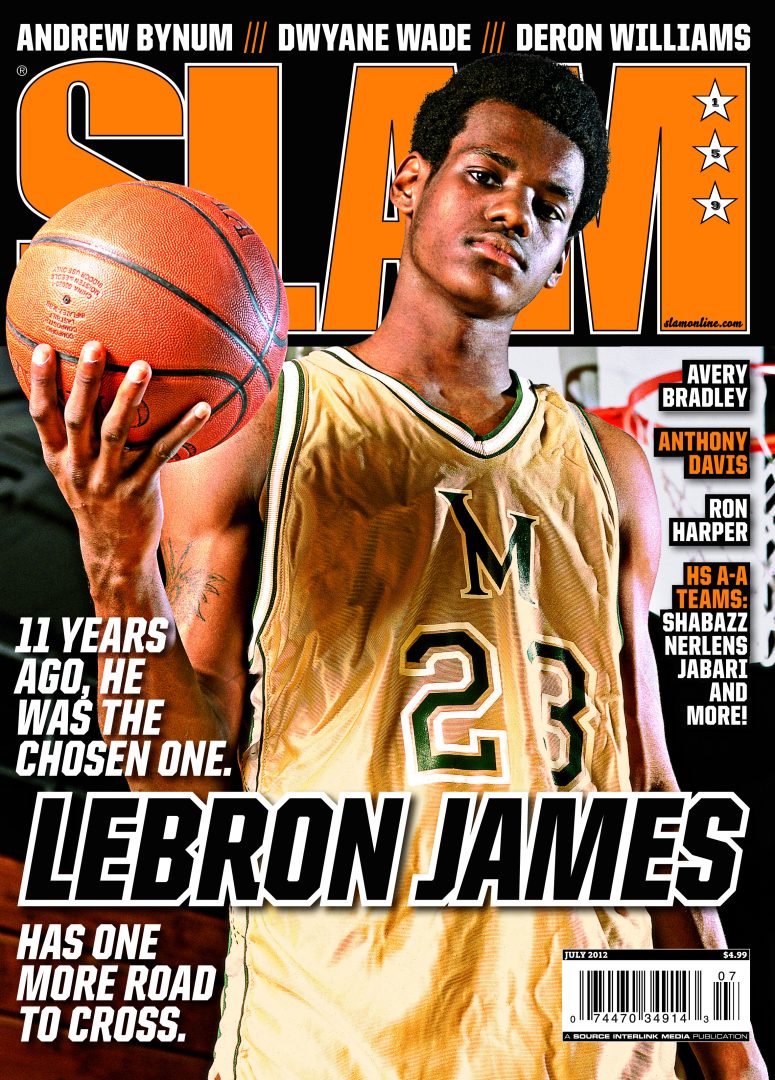
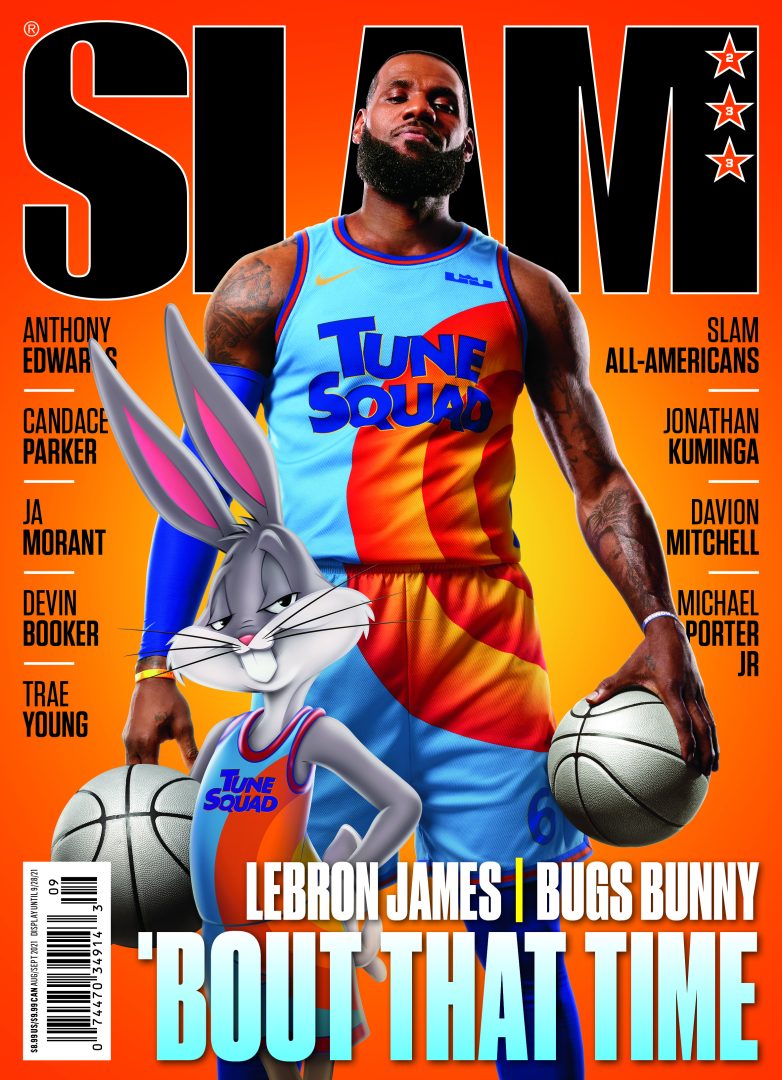
But if you’ve been there as long as we have, the numbers, staggering as they are, remain secondary to the story. He put together arguably the greatest—and undeniably the most high-profile—high school career of all time. He came into the League with unequaled hype, and based on his individual play, lived up to it almost immediately. Championships proved more elusive in the NBA than they had in high school (where he won three), and the fact that he couldn’t carry otherwise mediocre rosters to a title during his first seven seasons in Cleveland led to a narrative that LeBron lacked a killer instinct. It was here that he paled when compared to Mike and Kobe, until he kicked off the Super Team era; with Dwyane Wade as his runningmate and a supporting cast more in line with the groups Mike and Kobe ran with, he finally copped his first two rings.
Eventually he came home(ish) to Cleveland, and with Kyrie and Kev took out the 73-win Dubs for ring number three. Then, perhaps inevitably, it was on to L.A., a more logical home base for both his growing media and business empire and his growing family. This time, Anthony Davis played the elite sidekick as LeBron claimed a fourth chip.
But again, the story—the how of everything he’s done, even more than the what—is what compels us. How he reinvented the idea of player empowerment, determining the steps in his career path in a way no star ever had. How he built on the Jordan and Shaq endorsement model to become not just the face of but a stakeholder in businesses ranging from European soccer to fashion to Hollywood, where he’s a powerhouse behind the scenes and a half-decent actor on them.
And most importantly: how this son of a single mother, a kid who never knew his dad, has embraced his role of husband and father, actively supporting his own family in a way that balances their public life with an entirely authentic devotion.
So here is LeBron, pushing 40, the game’s elder statesman, an icon across sports and culture, an actual self-made billionaire, a man whose influence on the game—both on and off the court—might not be fully measured for years to come. He may or may not be your GOAT, but that hardly matters. He’s never been perfect, but he’s been the perfect guy for this magazine and everything we love about the game.
Photo via Getty Images. Portrait by Atiba Jefferson.